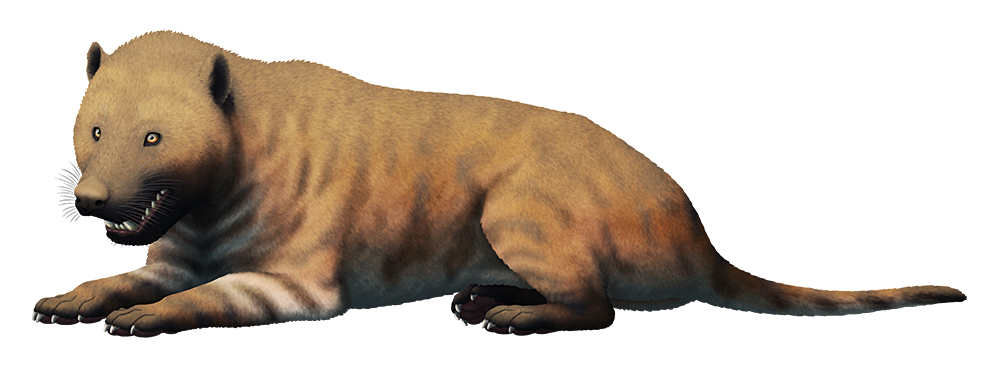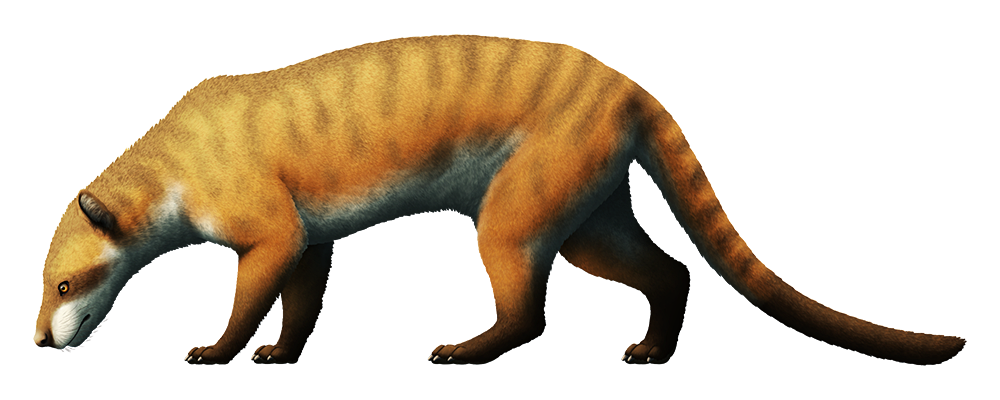Named after the mythical dog Cerberus, Kerberos langebadreae was a member of an early group of carnivorous placental mammals known as hyainailourids.
These large-headed predators were part of the hyaenodont lineage, evolutionary cousins to modern carnivorans that convergently developed similar shearing carnassial teeth in their jaws. Hyainailourids originated in Africa during the late Paleocene or early Eocene, and repeatedly dispersed into Eurasia and North America before eventually going extinct in the mid-Miocene.
Kerberos was one of the earliest of its kind known from Europe, living in Southern France during the mid-Eocene about 41-38 million years ago. It was close in size to a small American black bear, standing around 65cm tall at the shoulder (2’2″), not nearly as large as some of its later relatives but still making it one of the biggest carnivorous mammals in Europe at the time.
It was a heavily-built animal with a fully plantigrade posture, and would have been an active apex predator hunting similarly-sized early ungulates. While it wasn’t anatomically specialized for fast running it didn’t really need to be – it’s important to remember that modern bears have a similar chunky flat-footed build and yet can move surprisingly quickly.
Its incredibly powerful jaw muscles and premolar teeth adapted for bone-cracking also suggest it ate like a hyena, efficiently consuming entire carcasses.






